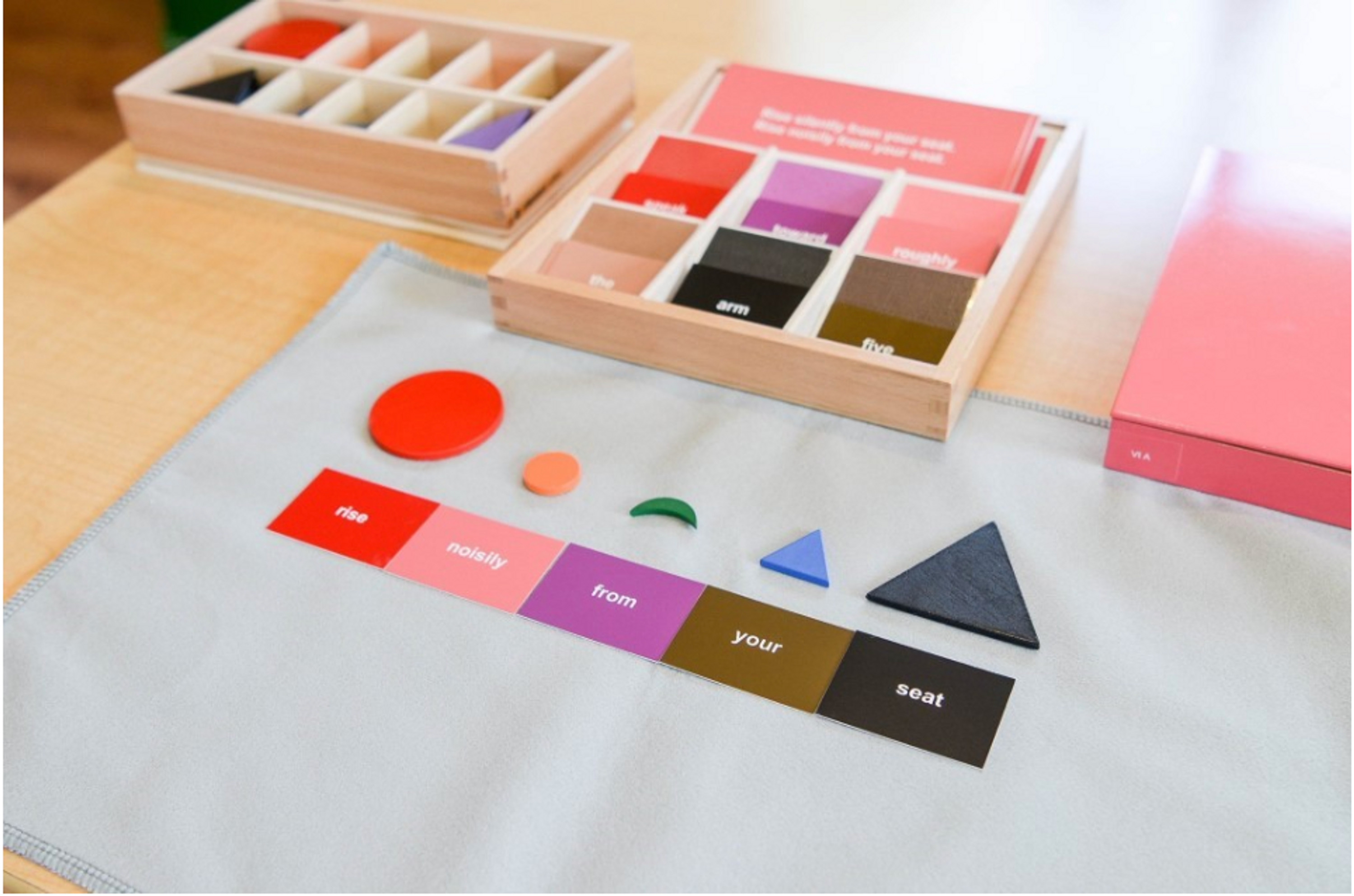Spotlight on Grammar Boxes
Grammar Boxes take up a lot of real estate on the language shelves of a Montessori elementary classroom. In this post, we'll explain what they are
Kelli Harran
Director of Program Support
Grammar Boxes take up a lot of real estate on the language shelves of a Montessori elementary classroom, and for good reason! They unlock the keys to grammar and classifying language for young children. Each color corresponds to a particular part of speech, and each box builds on the understanding of the previous one.
Related parts of speech are grouped together in each of the eightboxes. For example, the first box, the Article Grammar Box, pairs the article and noun together to introduce the child to noun phrases (e.g., an acorn, the apple, etc.). The next box features the Adjective Grammar Box, which includes adjectives to describe nouns (e.g., the colored pencils). The next box adds the verb and cultivates an awareness that the verb enlivens. Now the child has all the components to form a sentence!
The child continues working through the rest of the boxes in the sequence, incorporating understanding of the preposition, adverb, pronoun, and conjunction until finally reaching the end of the line with the ninth box — the interjection, wow!
Each new grammar box is first introduced with a story or a game. Take the adjective, for example. The guide will gather a group of children and ask the children to get something for her: a book. When the children return with various books, the guide responds, “No, not that one! Sorry, I was thinking of another.” She then explains that when there are many of something, I have to tell you what kind. “I want the book with the green spine.”
Children typically zoom through the Grammar Boxes in Lower Elementary and have experience experimenting with syntax by exchanging the order of words in a phrase or sentence using the cards that accompany the boxes. They are then ready for classification work!
As they continue with the adjective, for example, children will have the experience of classifying the degree of adjectives, such as soft, softer, softest. Next, they will use the Classification Chart for Adjectives to practice identifying adjectives as either proper (e.g., Canadian), descriptive (e.g., rectangular), numerical (e.g., third), or pronominal (e.g., that), and make even finer distinctions within those categories.
In Montessori, grammar is tactile, and quite enjoyable! This foundation produces agile writers with a solid understanding of the function of words.
This is not only beneficial to the development of writing skills in the child’s native language, but also to learning a foreign language and noting differences in grammatical structure.
Kelli Harran
Kelli Harran is the Director of Program Support at Higher Ground Education.
Sign up for our newsletter
Get started with our community today! Sign up for resources.
